October 1st, 2020
INTERACTIVE WATER FEATURES IN THE COVID-19 ERA
understanding water / user experience
The coming of the world Covid-19 pandemic has once more pointed out the importance of the safety of fountains water and the need to protect all the people who interact with Water Features.
We feel confident in saying that thanks to an accurate design including all the needed devices, it is possible to offer users the opportunity to enjoy interactive water features without any increased risk of viral transmission.
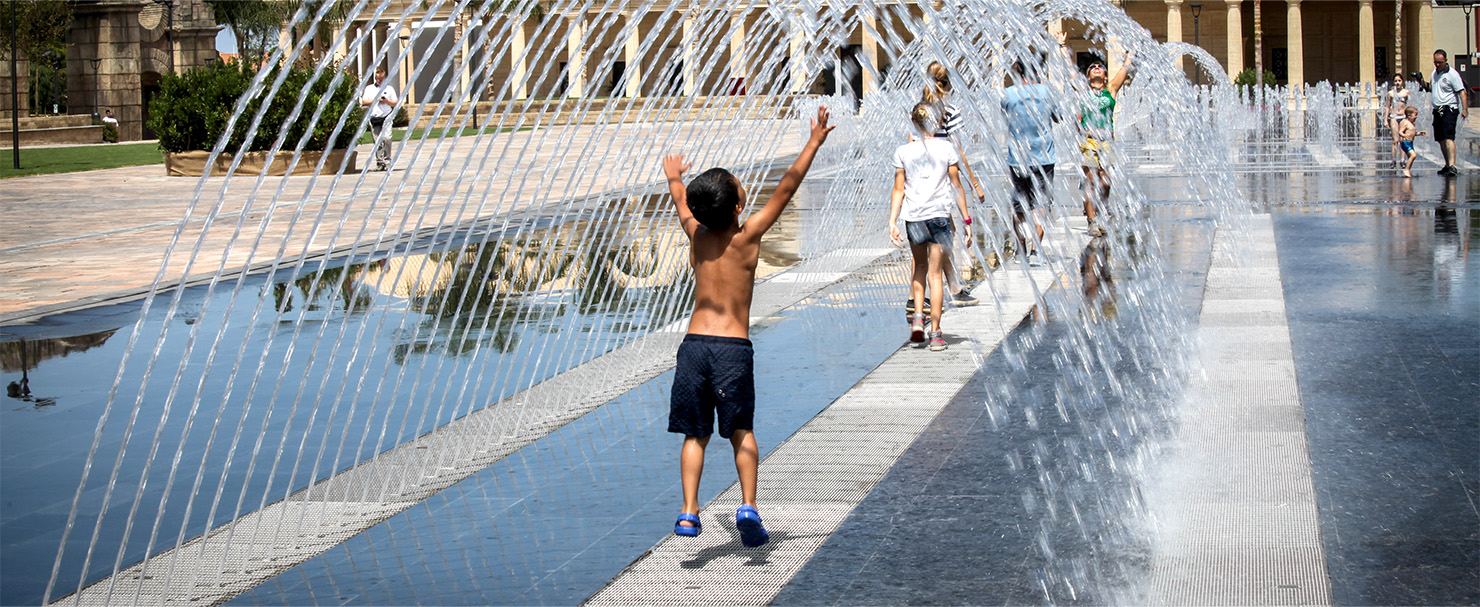
↑ Water tunnel in Cinecittà World, Rome
0.0 FOREWORD
The coming of the world Covid-19 pandemic has once more pointed out the importance of the safety of fountains water and the need to protect all the people who interact with Water Features.
This topic did not take watercube DESIGN aback, since it has always been committed to protecting the health of those who approach its creations from potential injuries brought by any type of pathogen capable not only of surviving in the water but also of settling and proliferating inside of hydraulic systems, as seen in recent times with the new Legionellosis outbreaks.
This problem takes on particular importance for interactive fountains, whose main distinguishing feature is their playful aspect.
Aware that it is one thing to fight bacteria and another to neutralize viruses, let us briefly describe the measures that allow us to minimize the risk of COVID transmission.
→ Social distancing will be a matter from 2020

1.0 CONCEPT DESIGN
Some interactive Water Features are designed and built to bring together a fair number of users, mostly children, in a limited space.
It is quite intuitive that, with reference to distancing rules, a redistribution of water plays taking this aspect into due consideration is in order.
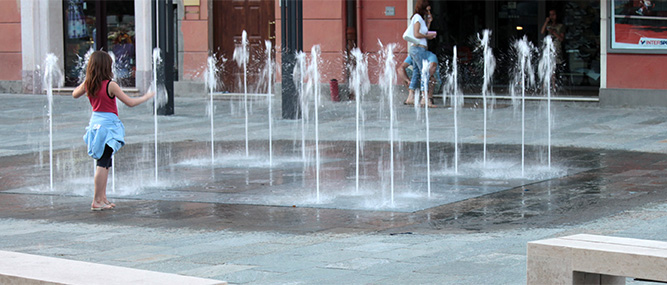
↑ Piazzetta Braglia, Vignola
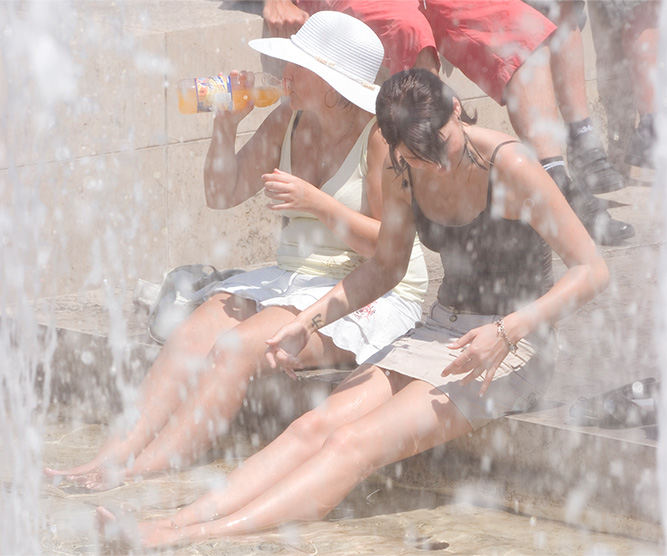
↑ People cooling off in the fountain at Museum of the Ara Pacis, Rome
2.0 FILTERING
In over 30 years of activity, watercube DESIGN has always been very attentive to this activity, which is fundamental in order to remove all polluting substances and a large part of pathogens from recirculating water. Our philosophy is very simple and consists in holding back as much dirt as possible with filters by using the least quantity of supporting chemicals.
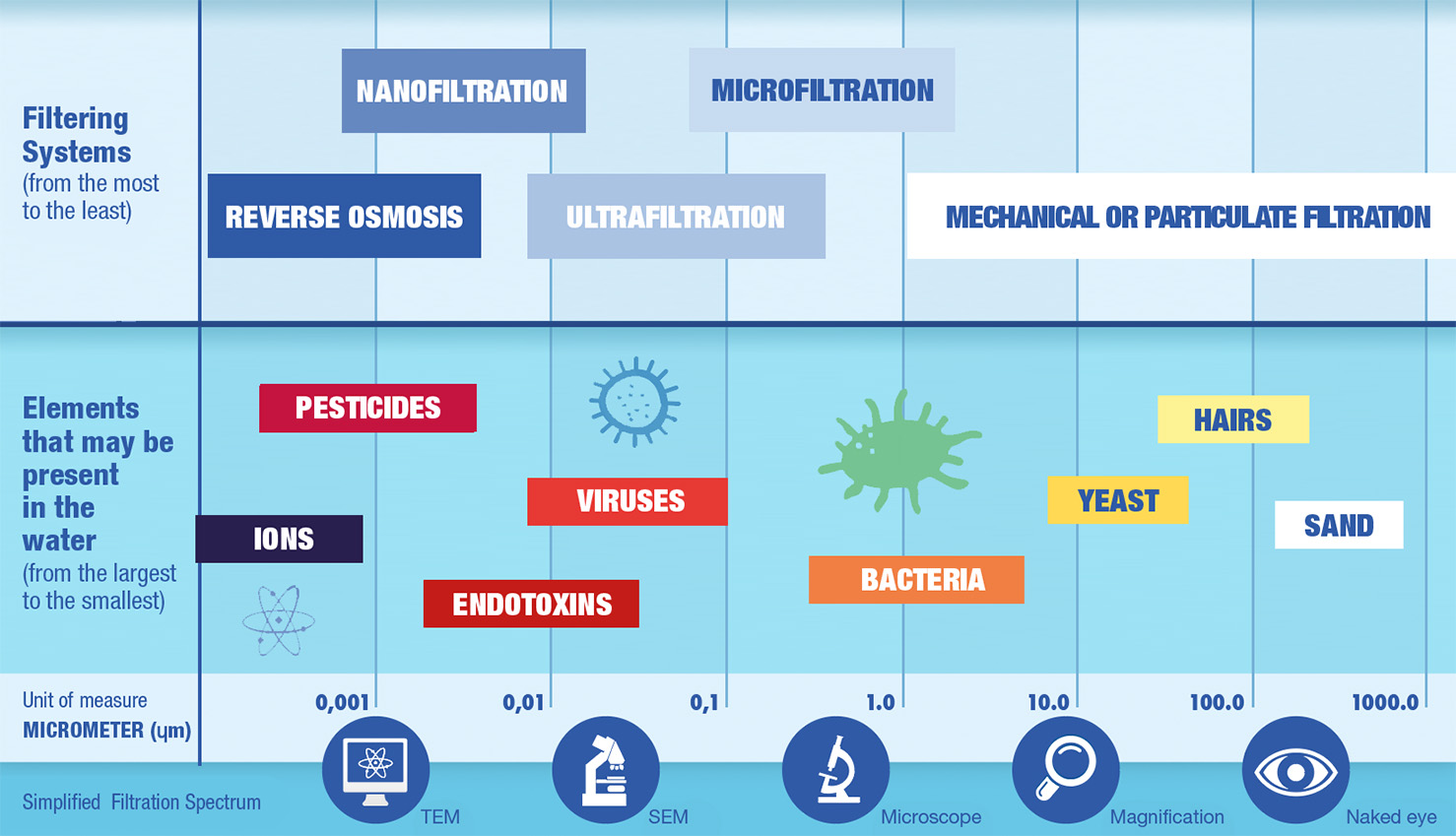
↑ Filtering System [source: Culligan.it ]
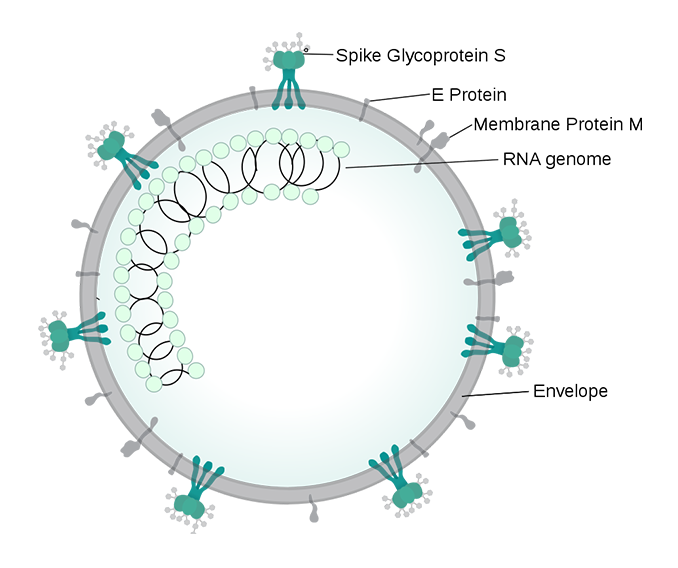
↑ Illustration of SARSr-CoV virion
To obtain this result, we have chosen to insert some grit in our sand filters. This is made with special materials capable of preventing the formation of a biofilm (a bacterial culture environment) and reducing the amount of water necessary for backwashing considerably; we carry out the filtration process at an extremely low speed (it is intuitive that filtration improves the slower the passage of water through the chosen medium is); we use flocculating products injected by static cavitational mixers capable of aggregating the smaller pollutants, thus supporting their interception. With these and other measures, we have scaled the filtration capacity up to 0.1 micron (against the efficiency of about 20 microns of a normal sand filter in good conditions).
Alternatively, it is possible to use perlite or diatomaceous earth filters, which are different in terms of operating modes but both capable, as a standard, of delivering performances similar to the aforementioned mass filters, though with a further saving in the consumption of water.
3.0 CHEMICAL TREATMENT / ADVANCED OXIDATION PROCESS
In most cases, the system used for the chemical treatment of a water feature is similar to the one of normal residential swimming pools.
However, this elementary choice represents only a first step in the range of possible applications and does not always satisfy sanitization needs. In fact, the functioning of a fountain is often much closer to that of a Jacuzzi than to that of a normal swimming pool, because the splitting of CO2 chemical reactions, difficult to manage without an adequately designed system, is triggered with a greater intensity.
The ideal balance expressed by the Langelier saturation index is often exceeded and it is necessary to intervene chemically to restore an acceptable balance, not only to remove limescale or corrosive phenomena generated by the water, but also to properly manage pH, which heavily affects the effectiveness of traditional sanitizers.
For this reason, watercube DESIGN has chosen to add to the traditional pH control, in association with the injection of a sanitizing product, the usage of a UV lamp or an ozone sterilizer. The latter is capable of neutralizing not only bacteria, but also viruses.This methodology can be further enhanced by using both devices simultaneously. Water enriched with Ozone is irradiated with UV and allowed to flow inside a pipe. The result of this operation is the formation of OH- hydroxyl radicals , which create the conditions for a so called Advanced AOP Oxidation Process according to the following reactions:

↑ Droplets produced when a man sneezes
O3 + H2O = O2 + H2O2
2O3 + H2O2 = 2OH- + 3O2
IN THE PRESENCE OF UV IRRADIANCE
Therefore, OH- hydroxyl radicals thus formed will enhance the Oxidation-Reduction Potential (ORP) obtained by the sum of O3 and UV rays, improving the overall result.
Once the water is reintroduced into the WF recirculation circuit, these important results, will be retained through the use of the canonical oxidizing products based on sodium / calcium hypochlorite, bromine / chlorine, hypochlorous acid etc. However, their quantity will be reduced to one-tenthcompared to a standard use.
Instead of a simple sanitization, we have therefore developed a powerful water sterilization process, avoiding the use of chemicals and at the same time obtaining O2 as a by-product. This makes this technique, combined with the extreme reduction of products needed to upkeep the ORP in the pool, absolutely compatible with the concept of sustainability.

↑ ORP of Oxidant Agents
4.0 AUTOMATION
During the lockdown and following the distancing policies imposed by authorities, we all have experienced the difficulty in making transfers.
watercube DESIGN equipped its hydraulic systems with an automatic control system that analyzes the data detected by different sensors and checks the Total Dissolved Solids (TDS), the pH, the filter pressure, the pumps amperage, etc.

↑ There’s the needing for a new, wise normality.
Automation allows you to interact with the pumps frequency variators (some of which operate with permanent magnets for a further consumption reduction), controlling the speed of the motors; to monitor the quantity of product injected to control the pH (possibly using CO2 rather than an acid in favor of sustainability); to add fresh water if the TDS value exceeds the set threshold; etc.…
All these functions operate through an Internet connection that allows us to supervise the system and, if necessary, to intervene remotely or schedule an on-site intervention.
Creating fountains which are able of maintaining an optimal quality of water is a priority for watercube DESIGN.
We believe that with an accurate design which includes all the devices described above we can offer the users of our interactive fountains the opportunity to enjoy our creations without any risks of viral transmission.

